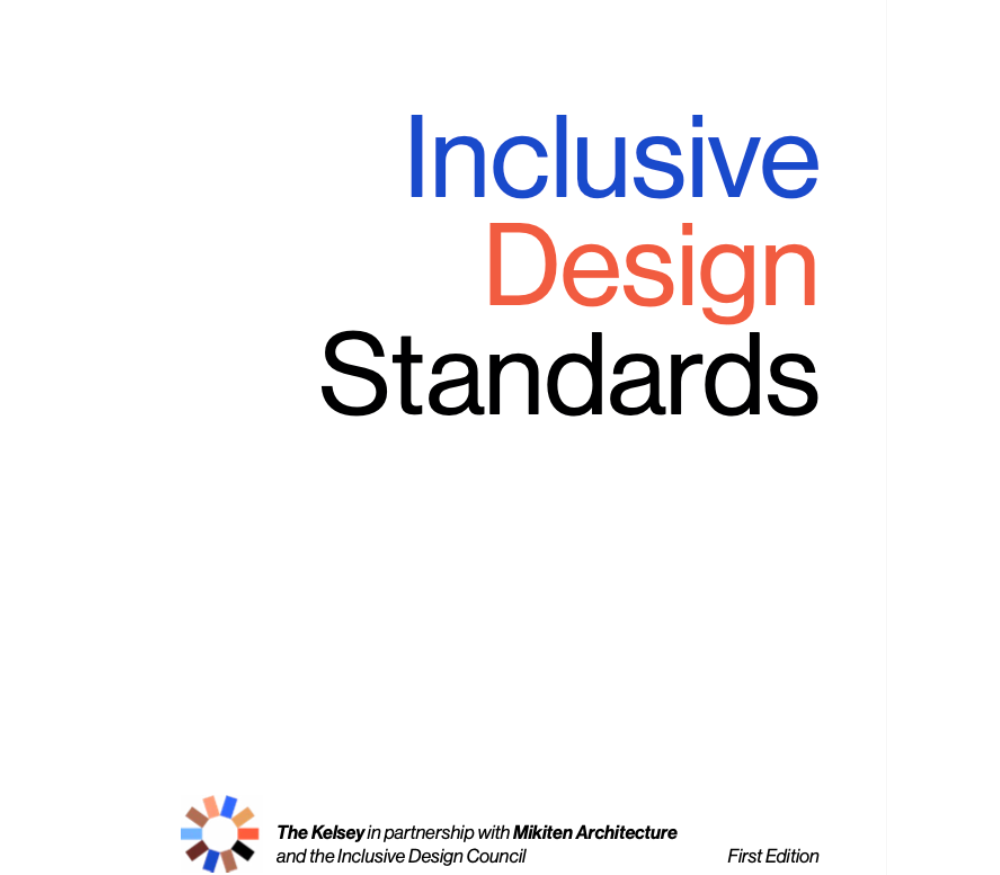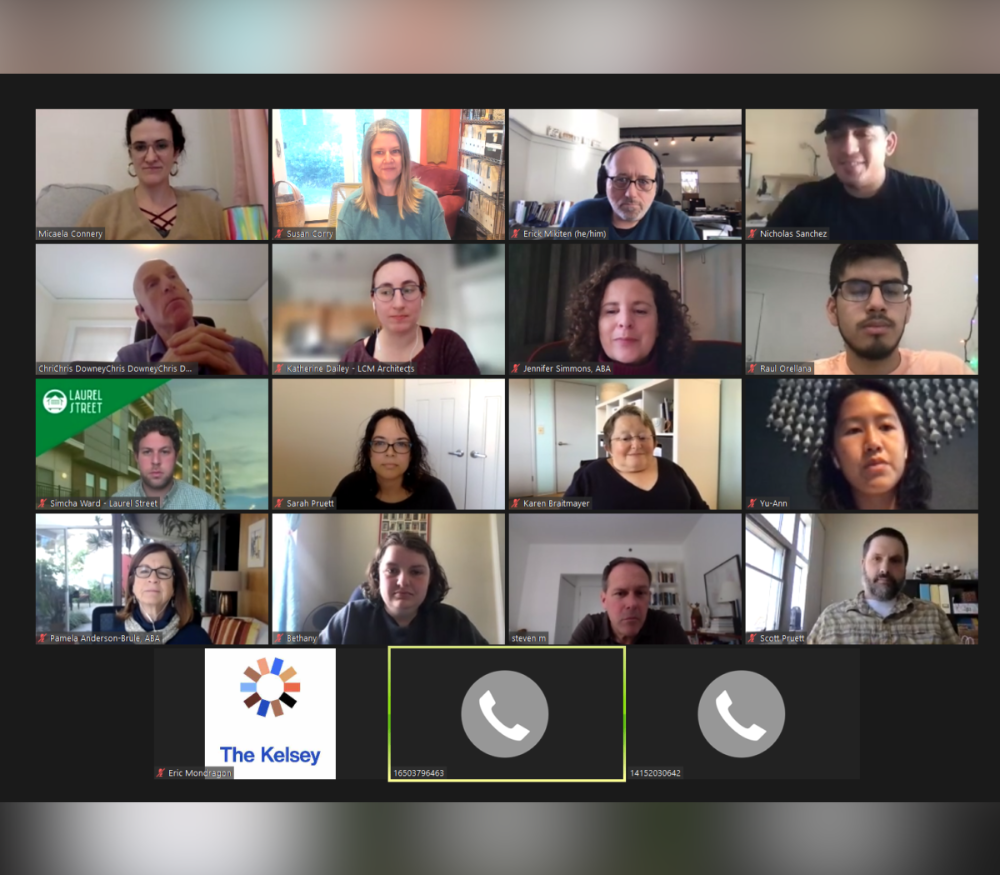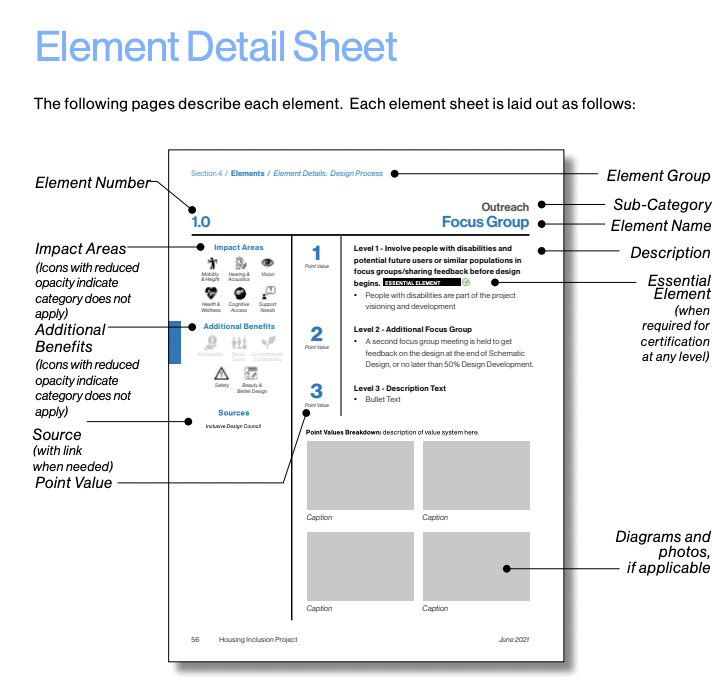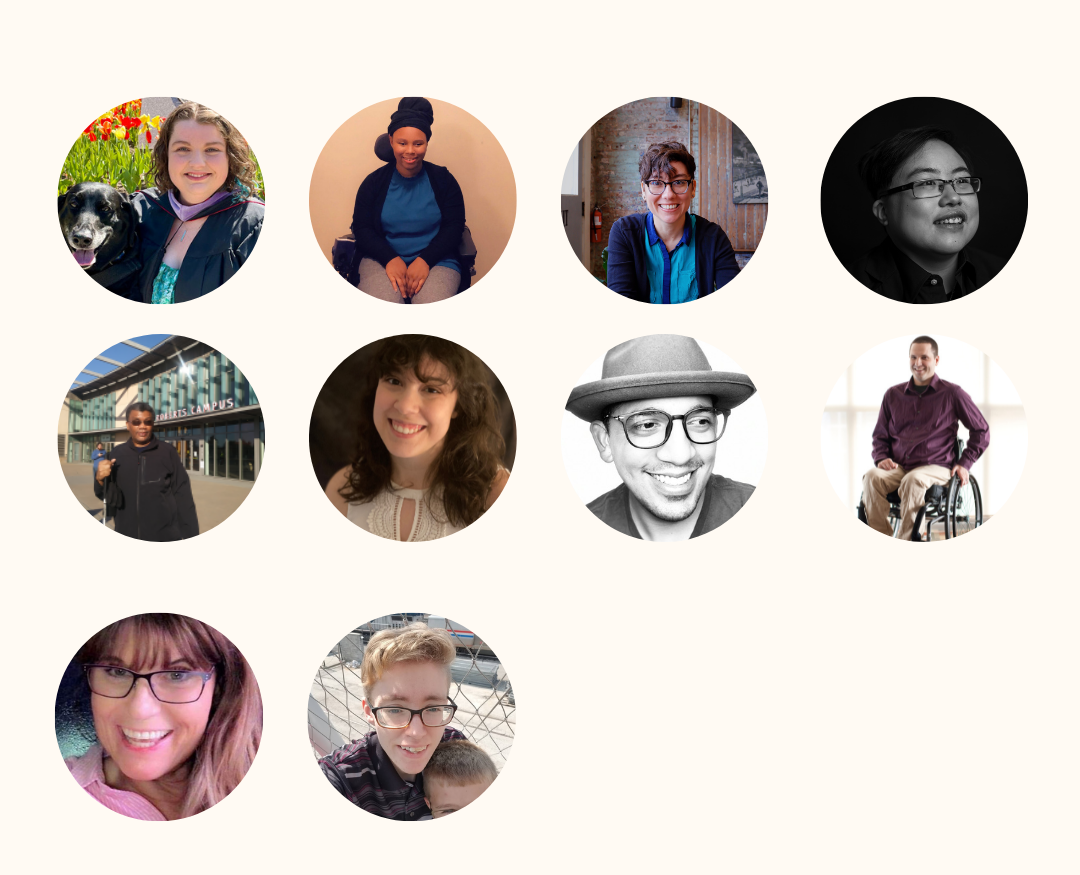Inclusive Design Standards
26% of people have a disability, yet it’s estimated that less than 6% of the national housing supply is designed to be accessible. As housing communities are created, they don’t often meet the diverse accessibility and inclusion needs of people with disabilities. While code sets the baseline for what’s required, no holistic guidelines define an implementable, progressive approach to creating truly accessible and inclusive housing. The Inclusive Design Standards aim to equip designers, builders, and developers with guidelines and frameworks for disability-forward housing creation.

Access
The Inclusive Design Standards define a set of multifamily housing design and operations strategies. Co-created by advocates, developers, and architects, the elements support cross-disability accessibility and link disability-forward design choices to intersectional benefits around affordability, sustainability, racial equity, and safety. Development teams can use the Inclusive Design Standards to plan and design their projects, then self-certify their communities on their level of access and inclusion.
Click to access the Inclusive Design Standards.
The link includes open-source access to the Inclusive Design Standards, a text-only version, and a self-certification tool.

Team
The Kelsey created the Inclusive Design Standards in partnership with Erick Mikiten of Mikiten Architecture. They were shaped with the support of our Inclusive Design Council as well as workshops with designers, developers, and architects.

Use
The Inclusive Design Standards consist of over 300 Elements. Elements reflect design and operations choices and include development strategies, building features, or operational policies that support accessibility and inclusion. Elements range from specific physical features to resident services, design team makeup to building amenities, leasing strategies to materials selection, and beyond. The Inclusive Design Standards organize elements by Design Categories, Impact Areas, and Additional Benefits.

Support
The Kelsey, Mikiten Architecture, and the ten (10) members of the Inclusive Design Council are available to provide project-specific or capacity-building technical assistance for your housing projects or community. For partnerships, support needs, or to connect with an individual member of our Inclusive Design Council contact us here.
Committed Firms
Committed Firms champion the Inclusive Design Standards by actively using and sharing them. They drive access and inclusion forward in their work and communities and include designers, developers, research institutions, advocates, funders, and community organizations. To become a Committed Firm, contact us.
- Architects FORA
- Assistology
- BAR Architects & Interiors
- City of San Jose Housing Department
- The CIL | The Center for Independent Living
- David Baker Architects
- EAH Housing
- Holst Architecture
- Ink: Built Design
- LBBA Architecture
- Leddy Maytum Stacy Architects
- Main Street
- Mikiten Architecture
- Oakland Housing Authority
- PYATOK
- Schemata Workshop
- Scher Spaces
- SOUR
- Steinberg Hart
- Van Meter Williams Pollack LLP
- Work Architecture
- WRNS Studio